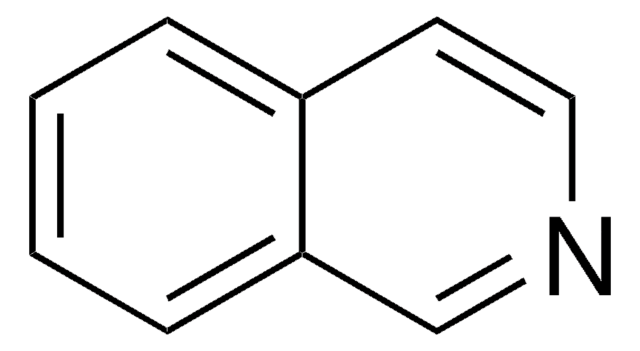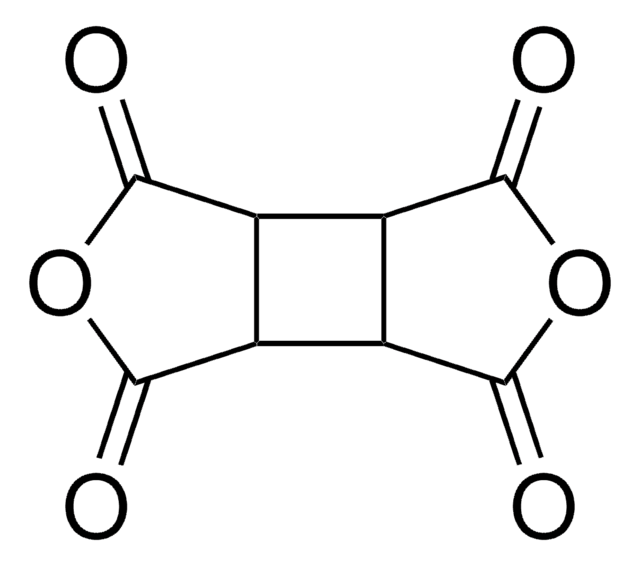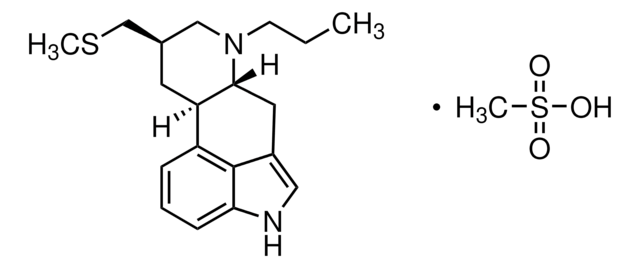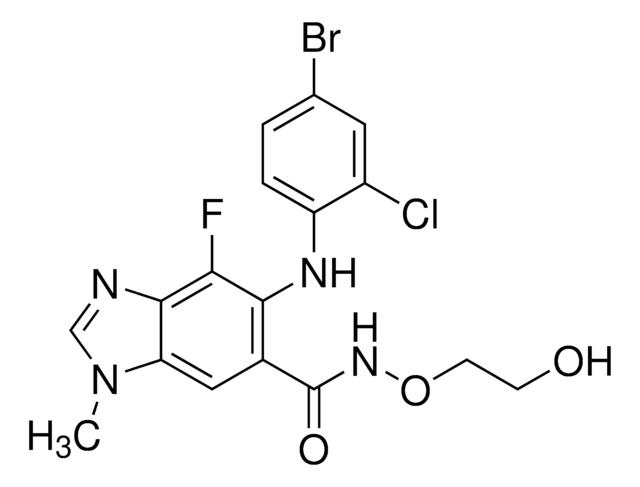About This Item
Recommended Products
grade
technical grade
Assay
90-92%
form
solid
refractive index
n20/D 1.623 (lit.)
bp
242-243 °C (lit.)
mp
26-28 °C (lit.)
density
1.099 g/mL at 25 °C (lit.)
SMILES string
c1ccc2cnccc2c1
InChI
1S/C9H7N/c1-2-4-9-7-10-6-5-8(9)3-1/h1-7H
InChI key
AWJUIBRHMBBTKR-UHFFFAOYSA-N
Looking for similar products? Visit Product Comparison Guide
General description
Application
- in the preparation of cis-[(dcbH2)2Ru(isq)2](ClO4)2 [dcbH2 = 4,4′-(CO2H)2-2,2′-bipyridine]
- to investigate the toxicity of three two-ring and five three-ring azaarenes to the green alga Scenedesmus acuminatus and its relationship with molecular structure
Signal Word
Danger
Hazard Statements
Precautionary Statements
Hazard Classifications
Acute Tox. 3 Dermal - Acute Tox. 4 Oral - Aquatic Chronic 3 - Eye Irrit. 2 - Skin Irrit. 2
Storage Class Code
6.1C - Combustible acute toxic Cat.3 / toxic compounds or compounds which causing chronic effects
WGK
WGK 2
Flash Point(F)
215.6 °F - closed cup
Flash Point(C)
102 °C - closed cup
Personal Protective Equipment
Certificates of Analysis (COA)
Search for Certificates of Analysis (COA) by entering the products Lot/Batch Number. Lot and Batch Numbers can be found on a product’s label following the words ‘Lot’ or ‘Batch’.
Already Own This Product?
Find documentation for the products that you have recently purchased in the Document Library.
Our team of scientists has experience in all areas of research including Life Science, Material Science, Chemical Synthesis, Chromatography, Analytical and many others.
Contact Technical Service









